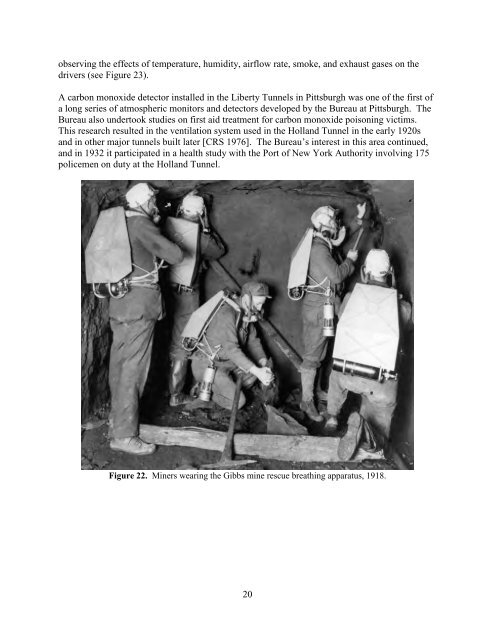One Hundred Years of Federal Mining Safety and Health Research
One Hundred Years of Federal Mining Safety and Health Research
One Hundred Years of Federal Mining Safety and Health Research
- No tags were found...
Create successful ePaper yourself
Turn your PDF publications into a flip-book with our unique Google optimized e-Paper software.
observing the effects <strong>of</strong> temperature, humidity, airflow rate, smoke, <strong>and</strong> exhaust gases on the<br />
drivers (see Figure 23).<br />
A carbon monoxide detector installed in the Liberty Tunnels in Pittsburgh was one <strong>of</strong> the first <strong>of</strong><br />
a long series <strong>of</strong> atmospheric monitors <strong>and</strong> detectors developed by the Bureau at Pittsburgh. The<br />
Bureau also undertook studies on first aid treatment for carbon monoxide poisoning victims.<br />
This research resulted in the ventilation system used in the Holl<strong>and</strong> Tunnel in the early 1920s<br />
<strong>and</strong> in other major tunnels built later [CRS 1976]. The Bureau’s interest in this area continued,<br />
<strong>and</strong> in 1932 it participated in a health study with the Port <strong>of</strong> New York Authority involving 175<br />
policemen on duty at the Holl<strong>and</strong> Tunnel.<br />
Figure 22. Miners wearing the Gibbs mine rescue breathing apparatus, 1918.<br />
20
















